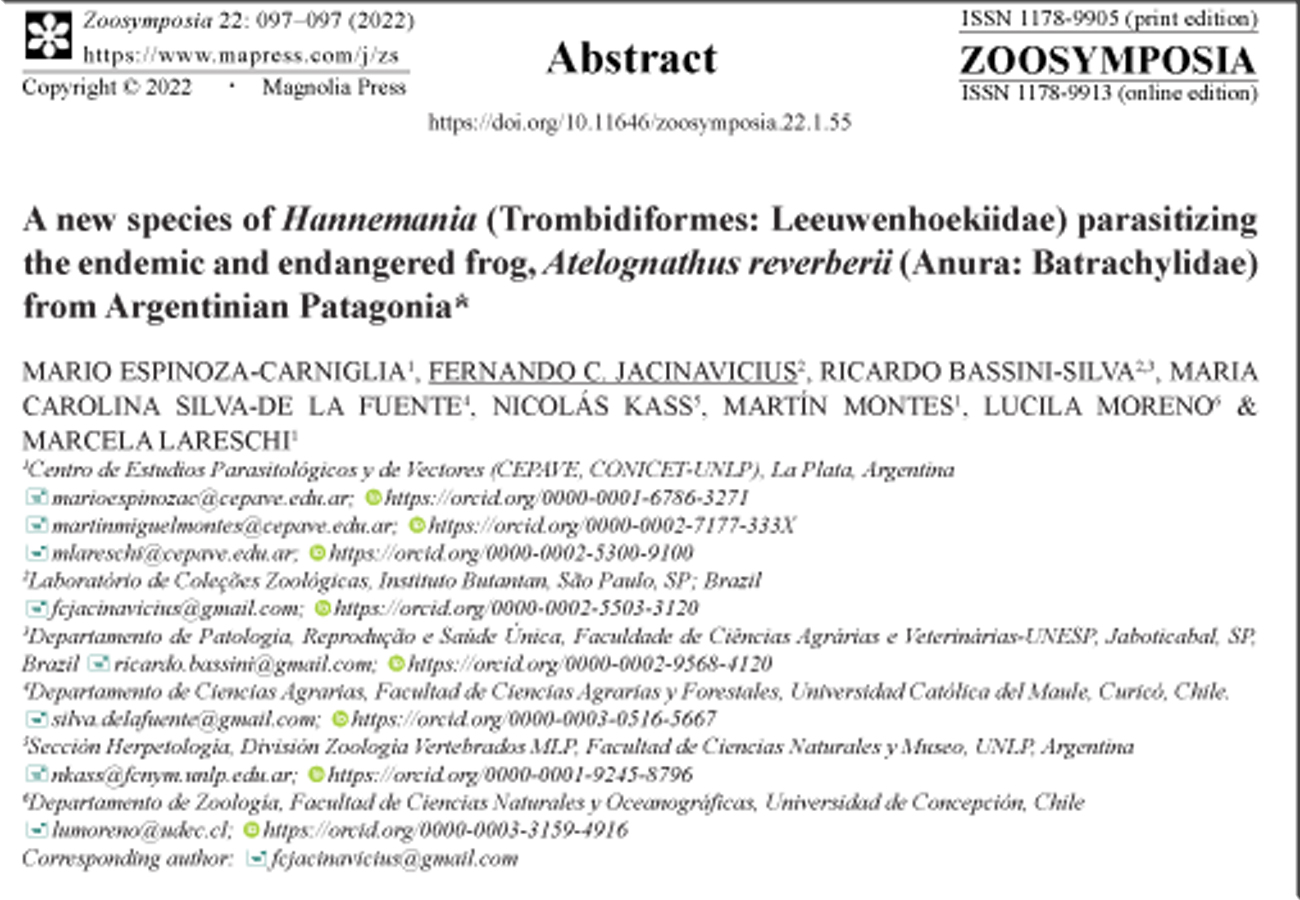Abstract
Chigger mites of the genus Hannemania Oudemans 1911 (Acari: Leeuwenhoekiidae) are subcutaneous parasites of amphibians. To date, 28 species have been reported from the Americas and Oceania. In Argentina, only six species have been recorded: H. achalai Alzuet & Mauri 1987, H. argentina Lahille 1927, H. edwardsi Sambon 1928, H. hobdayi Sambon 1928, H. minor Alzuet & Mauri 1987 and, H. samboni Ewing 1931. Those species were recorded parasitizing frogs of the genera Bufo Garsault (Bufonidae), Hypsiboas Wagler (Hylidae), Leptodactylus Fitzinger (Leptodactylidae), Nannophryne Günther (Bufonidae), Odontophrynus Reinhardt & Lütken (Odontophrynidae) and, Pleurodema Tschudi (Leptodactylidae). Most of these records are from the northern, northeastern and Andean regions in Argentina. In Argentinean Patagonia, the Meseta de Somuncurá is a protected natural area of great biological interest due to the strong endemism of fauna and flora (at least 14 endemic species). Only, H. hobdayi and H. samboni have been described from Argentinean Patagonia. The endemic Laguna Raimunda frog, Atelognathus reverberii (Cei) (Anura: Batrachylidae), is an endangered species with a distribution in the semi-permanent volcanic clay lagoons of Meseta de Somuncurá. The ecological characteristics of A. reverberii populations make it vulnerable to habitat degradation and parasitic diseases. This study aimed to describe a potentially new species of Hannemania collected as a parasite of A. reverberii in Meseta de Somuncurá, Río Negro, Argentina. A sample of 11 mites was cleared in lactophenol solution, slide-mounted in Hoyer’s medium, and observed using an optical microscope with Phase contrast and DIC. The mites have a palpal formula that differs from those of the previously described Hannemania species from Argentina and the rest of South America. They also differ from the related species in the number of eupathidia on the genu of leg I (σ) and the number and arrangement of dorsal opisthosomal setae. We consider that the species morphological differences and geographic isolation are sufficient to propose a novel species of the genus Hannemania. Herein, we present the first record of Hannemania parasitizing A. reverberii. As this amphibian is considered endangered, this novel species of Hannemania is probably threatened. This study contributes to the knowledge of this parasitic mite. In future studies, it will be necessary to consider molecular data of Argentinian Hannemania species to achieve a better understanding of the systematics of the genus.
References
-


